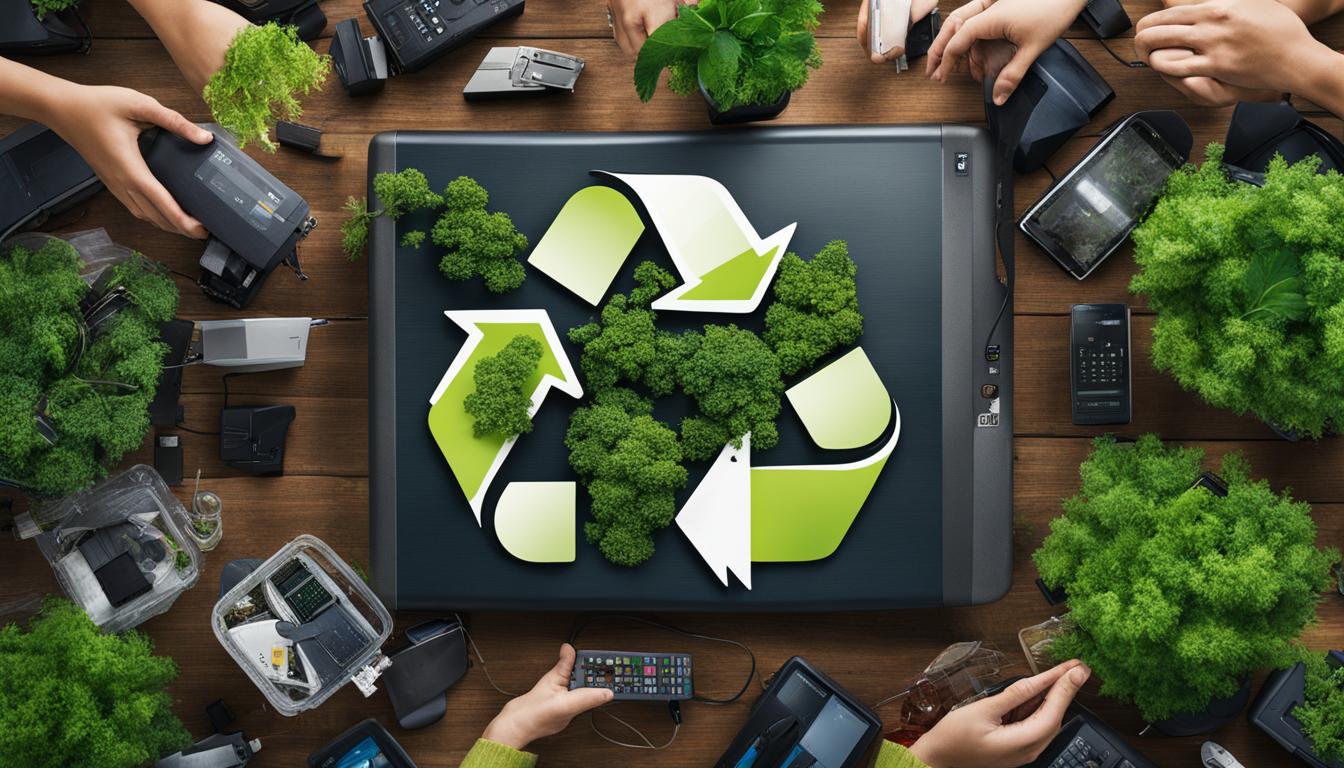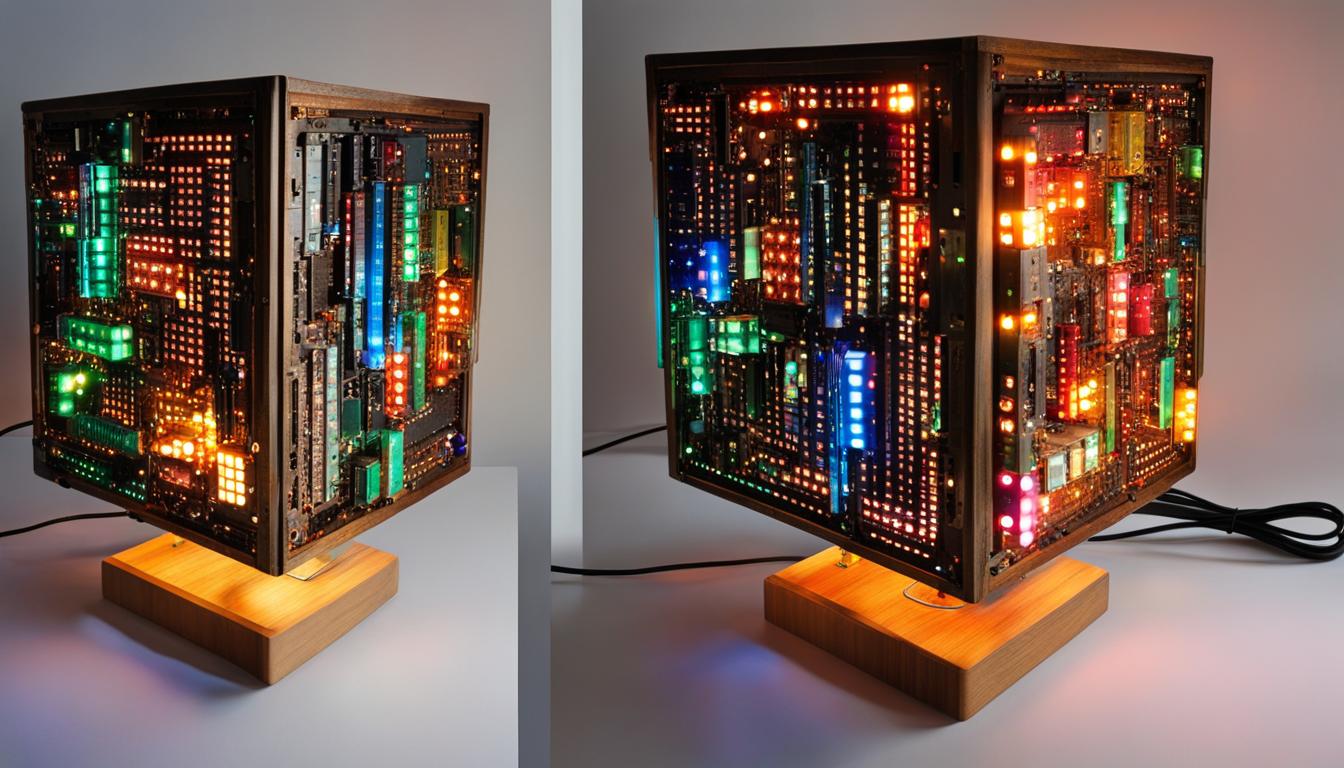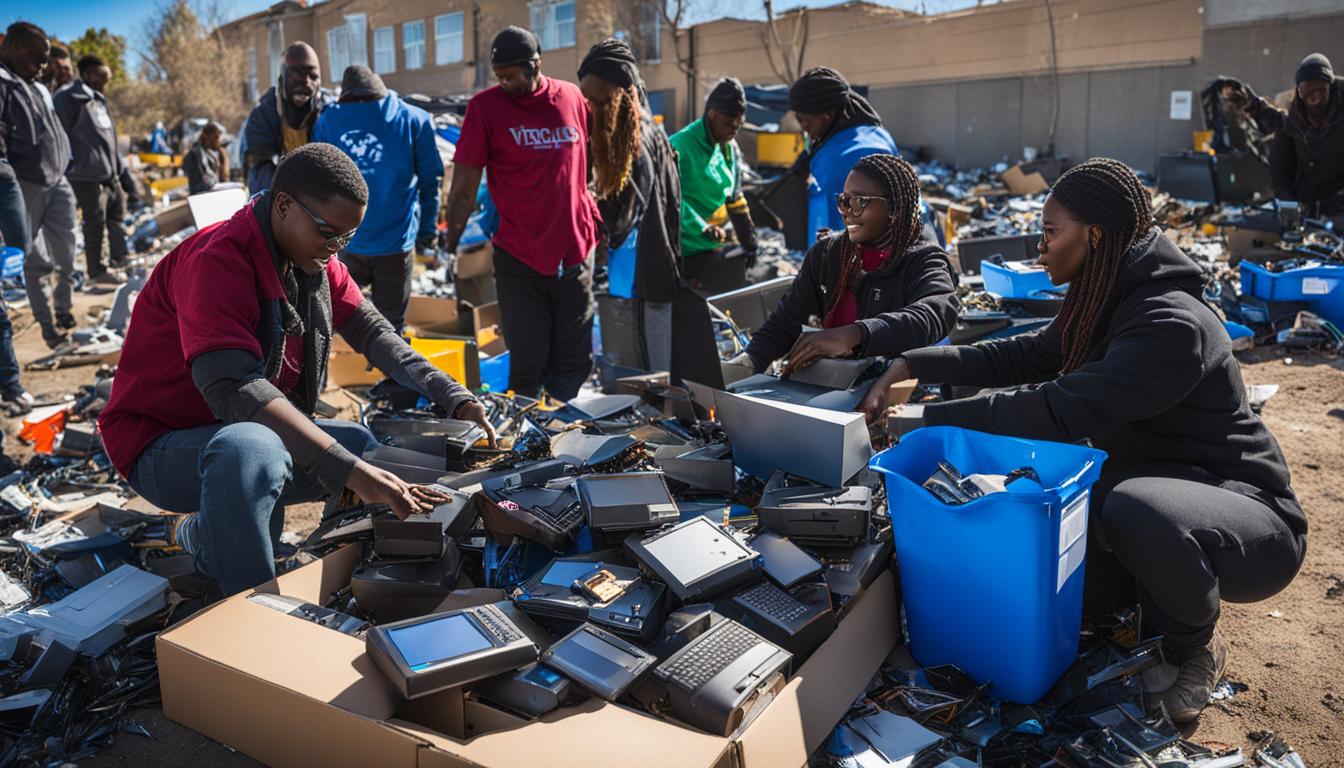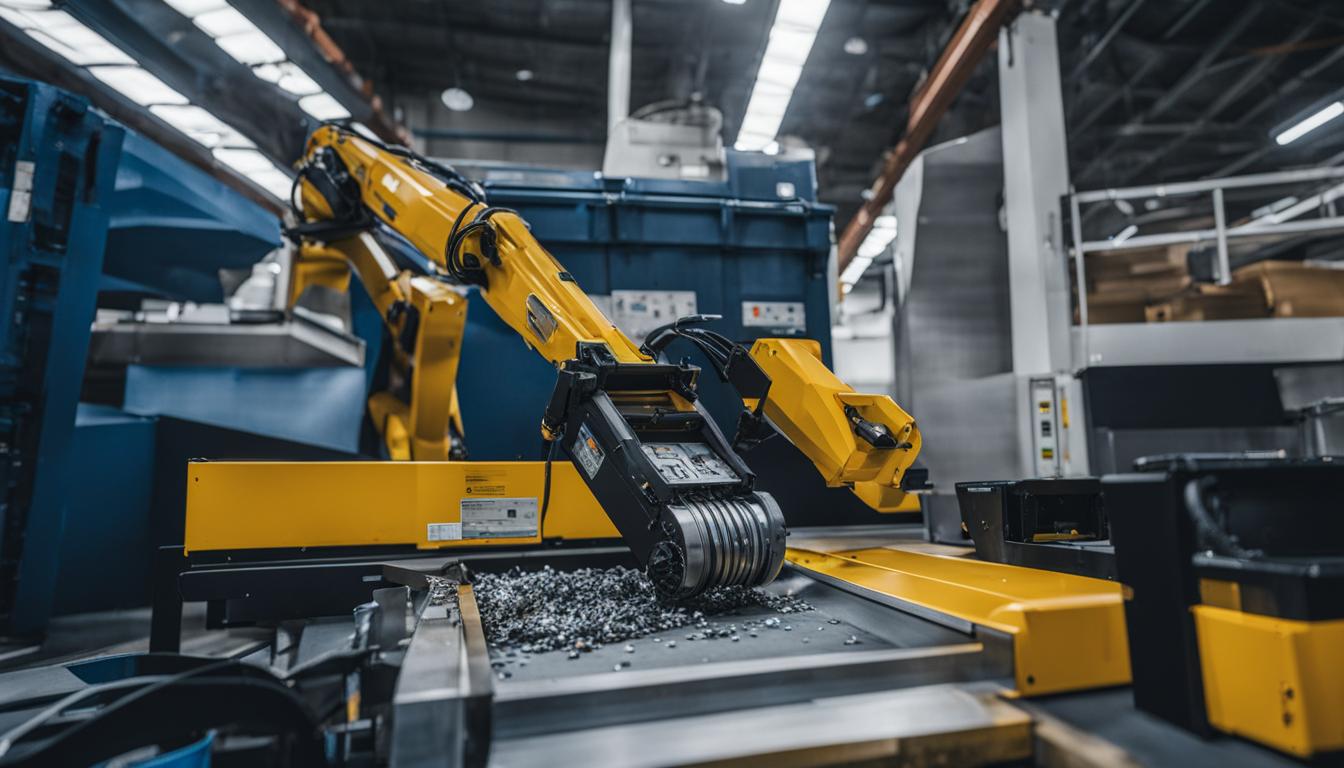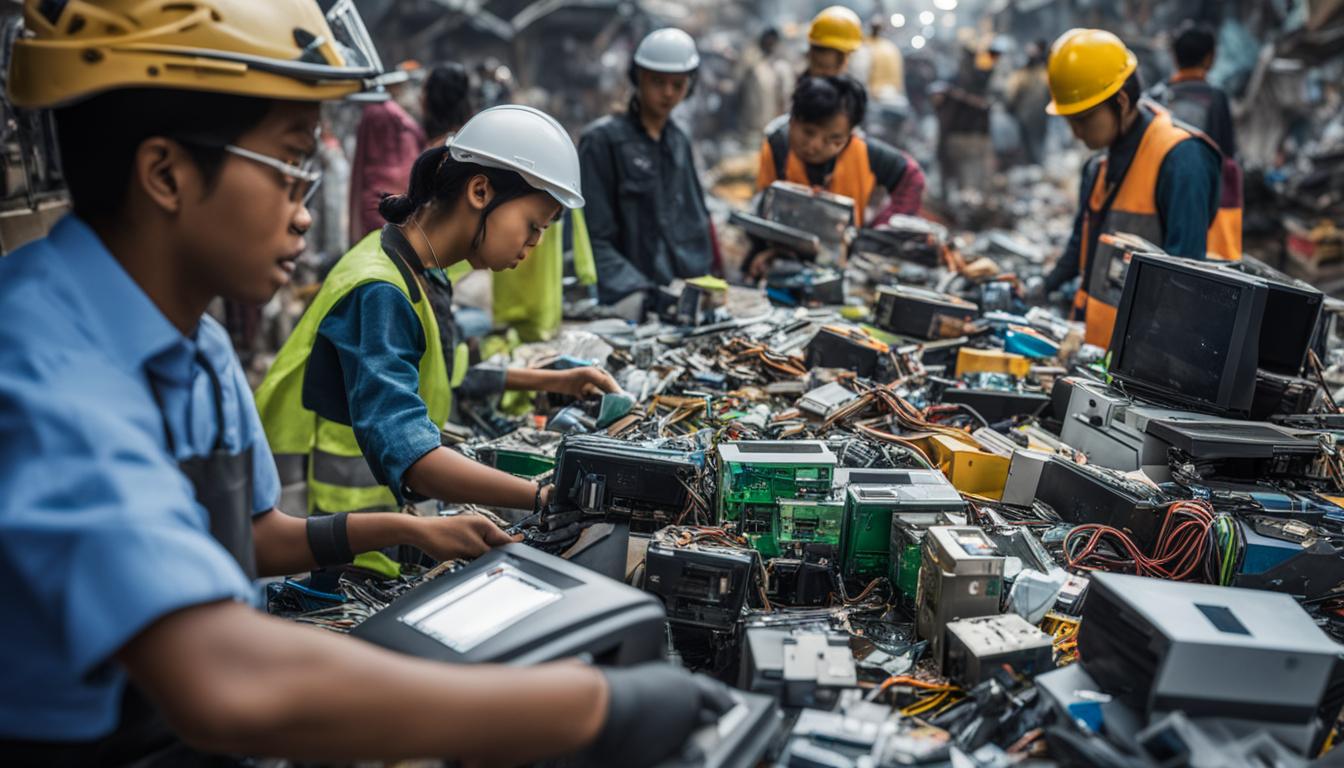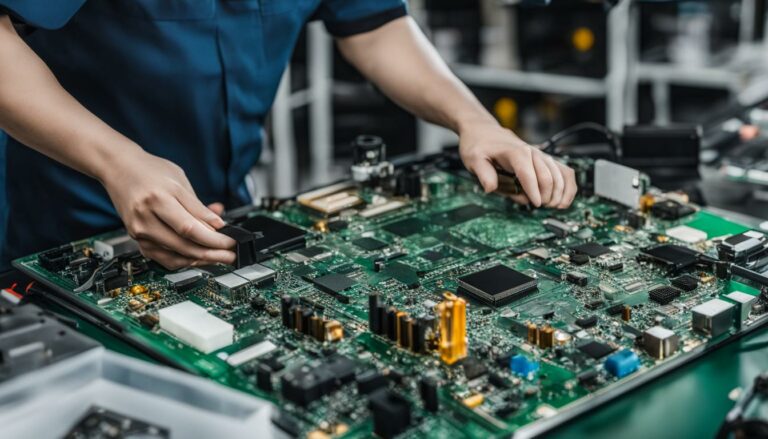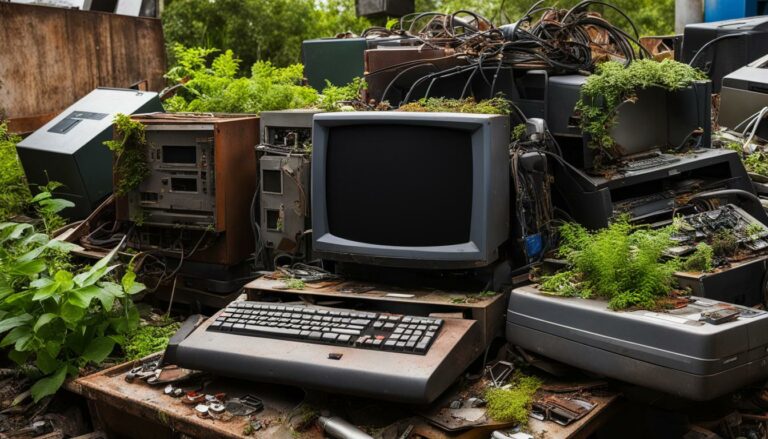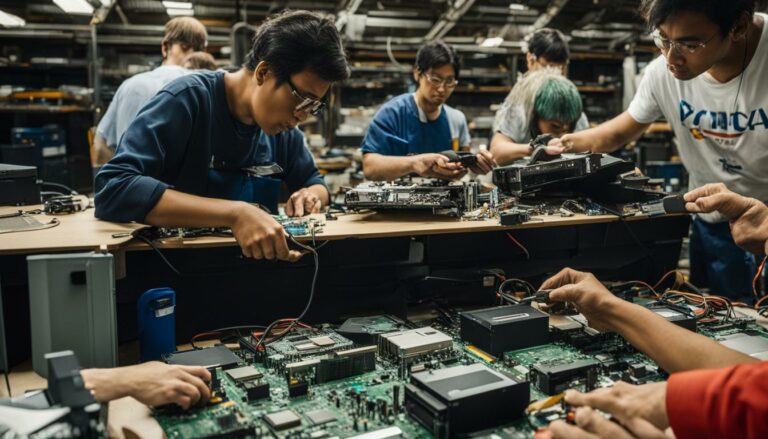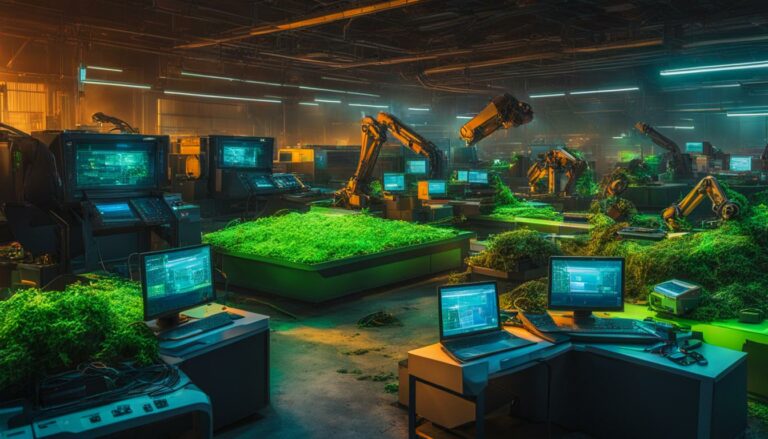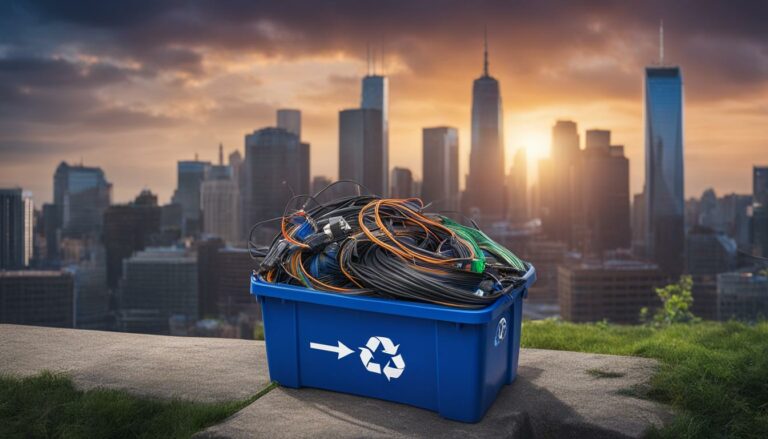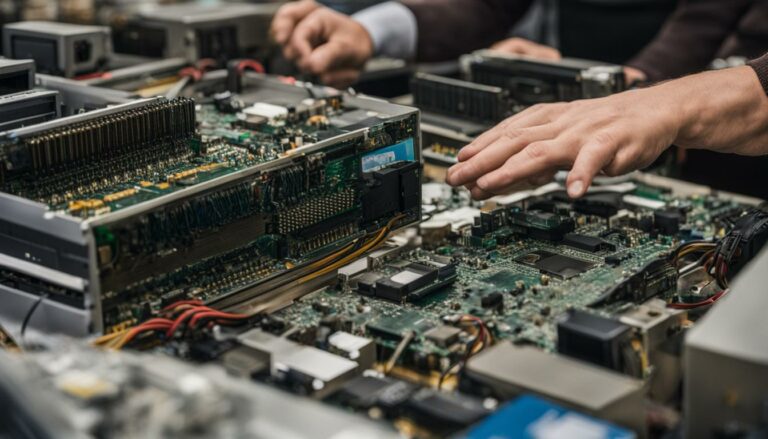Creating Art from E-waste: When Technology Meets Creativity
E-waste, or electronic waste, is a growing problem globally. Discarded electronic devices, such as kitchen utensils, radios, and hairdryers, contribute to this waste stream. However, there are artists and designers who see the potential in e-waste and transform it into unique and striking art. Vishwanath Davangere Mallabadi is one such artist based in Bangalore, India. He uses old tech devices, computer parts, mobile phones, and keyboards to create sculptures and other art pieces. By upcycling e-waste, he aims to merge creativity and technology, while also raising awareness about electronic waste and its impact on the environment.
Key Takeaways:
- E-waste art is a way to transform discarded electronic devices into striking pieces of sustainable art.
- Artists like Vishwanath Davangere Mallabadi create sculptures and art using old tech devices, computer parts, and mobile phones.
- Through e-waste art, awareness about electronic waste and its environmental impact is raised.
- Upcycling e-waste promotes responsible disposal and recycling practices.
- E-waste art showcases the potential for creativity and innovation in finding new purposes for discarded electronics.
The Power of E-waste Art
E-waste art goes beyond its visual appeal and serves as a powerful catalyst for environmental awareness and electronic waste recycling. Artists like Vishwanath Davangere Mallabadi utilize their creativity to shed light on the harmful toxins and pollutants released by improperly disposed electronic waste. Through their artwork, they encourage responsible electronics recycling and prompt individuals to reflect on their relationship with technology and its impact on the environment.
Not only does e-waste art raise awareness about electronic waste recycling, but it also showcases the potential for creative reuse. Artists repurpose discarded electronics to create stunning and meaningful artworks that challenge conventional perceptions. By demonstrating the beauty that can emerge from upcycled technology, e-waste art inspires viewers to reconsider their own e-waste management practices and make conscious choices for a greener future.
“E-waste art combines technology and creativity, transforming electronic waste into thought-provoking masterpieces,” says Vishwanath Davangere Mallabadi. “Through my sculptures and art pieces, I aim to not only create visually appealing works, but also raise awareness about the importance of responsible electronic waste recycling.”
Creative Reuse and Environmental Impact
E-waste art encourages creative reuse by showcasing the transformation of discarded electronics into artistic masterpieces. By repurposing these materials, artists demonstrate innovative ways to incorporate electronic components into their work. They blend traditional art mediums with e-waste or incorporate interactive elements, resulting in unique and captivating pieces.
The environmental impact of electronic waste is a pressing concern, as improperly disposed e-waste can contaminate soil and water sources. Through e-waste art, artists urge individuals and businesses to adopt sustainable practices and proper electronic waste disposal methods. By promoting responsible recycling, e-waste art contributes to a more sustainable future by reducing the amount of electronic waste that ends up in landfills.
E-waste art serves as a reminder that discarded electronics have the potential for second lives as artistic treasures. With a combination of creativity and environmental consciousness, artists worldwide are transforming e-waste into remarkable artworks, raising awareness, and inspiring change.
Unleashing Creativity through E-waste Art
E-waste art provides artists with a unique medium to unleash their creativity. By repurposing electronic waste, artists can create one-of-a-kind artworks that blend the aesthetics of technology with the raw materials of e-waste. This fusion results in striking contrasts and thought-provoking pieces that challenge perceptions. Artists in the e-waste art community continuously seek innovative ways to incorporate electronic components into their work, whether it’s through blending traditional art mediums with e-waste or incorporating interactive elements. Through their creations, they inspire others to reconsider their e-waste management practices and make conscious choices for a greener future.
One example of the creative possibilities of e-waste art is the remarkable artwork of Vishwanath Davangere Mallabadi. By using old tech devices, computer parts, mobile phones, and keyboards, Mallabadi transforms electronic waste into sculptures and other art pieces. His artwork not only showcases his artistic talent but also raises awareness about electronic waste and its impact on the environment. By repurposing discarded electronics, Mallabadi demonstrates the potential for eco-friendly technology and green art.
By repurposing discarded electronics, e-waste artists breathe new life into old technology, challenging the idea of obsolescence and encouraging sustainable practices. They showcase how electronic waste, which would have otherwise ended up in landfills, can be transformed into something beautiful and meaningful.
E-waste art is not limited to static artworks. Some artists incorporate interactive elements into their pieces, inviting viewers to engage with the art and think about their own relationship with technology. These interactive installations serve as a reminder of the importance of responsible e-waste management and the need for a more sustainable approach to technology. The combination of creativity and technology in e-waste art encourages individuals to consider the environmental impact of their electronic devices and make conscious choices that contribute to electronic waste management.
Table: Comparison of E-waste Art and Traditional Art
| Aspect | E-waste Art | Traditional Art |
|---|---|---|
| Creative Materials | Electronic waste, discarded technology components | Traditional art supplies such as paint, canvas, clay |
| Message | Raising awareness about electronic waste and sustainability | Expressing emotions, storytelling |
| Medium | Combination of technology and art | Various mediums including painting, sculpture, and photography |
| Interaction | Interactive elements incorporated in some artworks | Passive viewing experience |
E-waste art exemplifies the potential for creativity and innovation in tackling electronic waste management. By transforming discarded electronics into artistic masterpieces, artists inspire individuals to rethink their consumption habits and consider the environmental impact of technology. Through their creations, e-waste artists advocate for sustainable practices, eco-friendly technology, and green art.
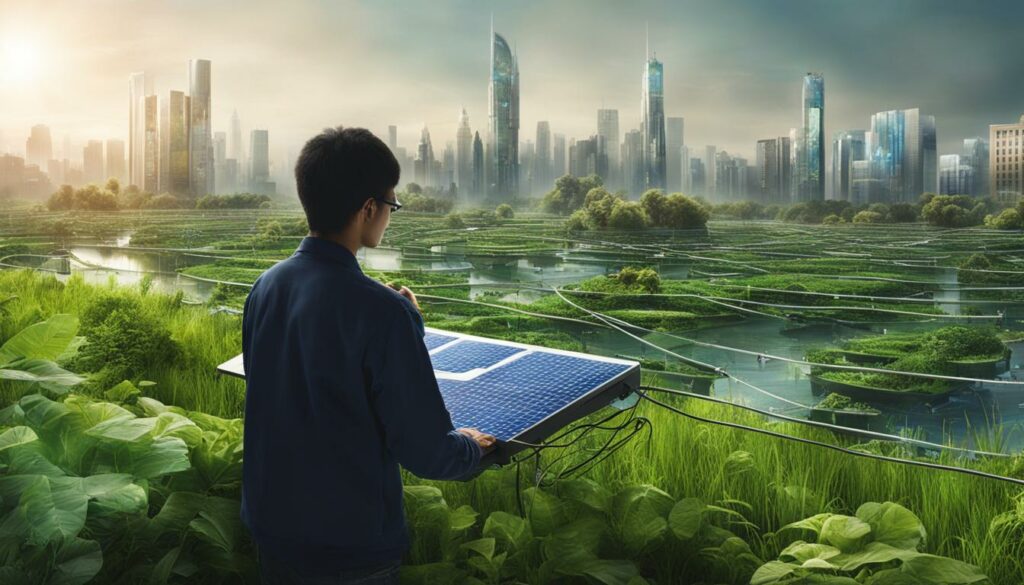
From Discarded Electronics to Artistic Masterpieces
One artist who has gained recognition for his innovative approach to e-waste art is Chen Xingyi from China. Chen’s creative talent shines through as he transforms discarded electronics into breathtaking works of art. By disassembling and rearranging smartphones, watches, tablets, and cameras, Chen breathes new life into these abandoned devices, giving them a second chance to be appreciated and admired.
“I believe that every piece of electronic waste has a story to tell,” says Chen. “My goal is to preserve the memories associated with these devices while raising awareness about electronic waste disposal and management.”
Chen’s sculptures serve as a powerful reminder of the digital age and the impact of our constantly changing technological landscape. Through his art, he encourages viewers to contemplate the cycle of consumption and disposal, urging them to think more deeply about electronic waste management.
| Artwork | Description |
|---|---|
| https://www.youtube.com/watch?v=H_P-fAGnCXU | Untitled |
| Rebirth | |
| Memories Within |
Chen’s unique artistic approach not only showcases his technical skills but also sparks conversations about electronic waste disposal. His ability to turn discarded electronics into awe-inspiring masterpieces inspires others to reconsider their own habits and contribute to a more sustainable future. Through his art, Chen reminds us that with creativity and conscious choices, we can transform electronic waste into something beautiful and meaningful.
Conclusion
E-waste art represents a powerful fusion of technology and creativity. Artists around the world are harnessing their imagination to transform electronic waste into stunning masterpieces. Through their artwork, they raise awareness about the environmental impact of electronic waste and encourage responsible disposal and recycling. By upcycling e-waste, artists not only create visually appealing pieces but also contribute to a more sustainable future.
E-waste art serves as a reminder that with a little creativity, even discarded electronics can find new purpose and beauty. By repurposing electronic waste, artists inspire others to rethink their approach to electronic waste management and make conscious choices for a greener future. Sustainable art is not only visually captivating but also a powerful tool for shaping attitudes towards electronic waste.
As society continues to generate increasing amounts of e-waste, it is crucial that we adopt sustainable practices to mitigate its impact. E-waste art showcases the potential for creative reuse and prompts us to consider the environmental consequences of our technological consumption. By supporting artists and their sustainable art initiatives, we can actively contribute to electronic waste management and foster a more environmentally conscious society.
FAQ
What is e-waste art?
E-waste art refers to the practice of creating artwork using discarded electronic devices, such as computers, mobile phones, and keyboards. Artists repurpose these e-waste materials to produce unique and visually striking masterpieces.
What is the purpose of e-waste art?
The purpose of e-waste art is twofold. Firstly, it aims to raise awareness about the environmental impact of electronic waste and promote responsible disposal and recycling practices. Secondly, it seeks to showcase the potential for creative reuse by transforming discarded electronics into beautiful and meaningful artworks.
How does e-waste art contribute to a more sustainable future?
By upcycling e-waste into art, artists not only create visually appealing pieces but also prevent electronic devices from ending up in landfills. This reduces the amount of electronic waste and the associated environmental hazards. E-waste art encourages individuals to reconsider their e-waste management practices and make conscious choices for a greener future.
Do e-waste artists use other art mediums in their work?
Yes, many e-waste artists blend traditional art mediums with electronic waste materials to create unique and captivating pieces. Some artists also incorporate interactive elements, combining technology with artistic expression in innovative ways.
Are there any notable e-waste artists?
Yes, there are many notable e-waste artists around the world. One example is Vishwanath Davangere Mallabadi from Bangalore, India, who uses old tech devices, computer parts, mobile phones, and keyboards to create sculptures and other art pieces. Another artist is Chen Xingyi from China, who transforms discarded electronics, such as smartphones, watches, tablets, and cameras, into stunning sculptures and functional pieces.


